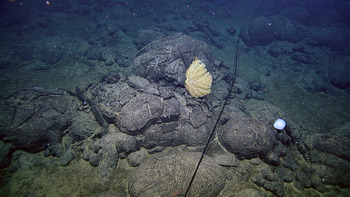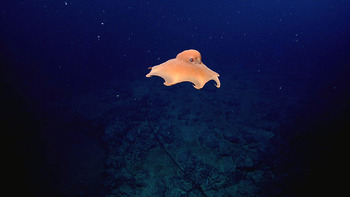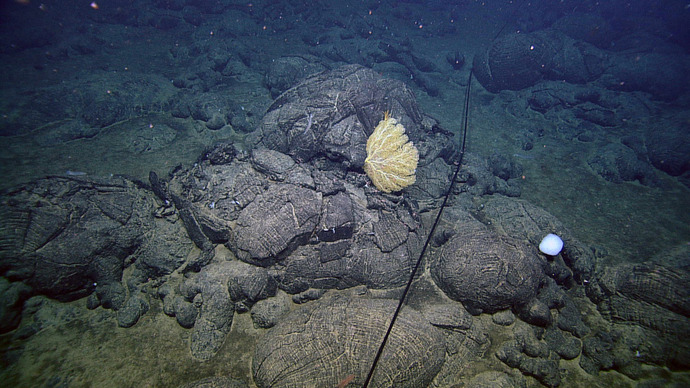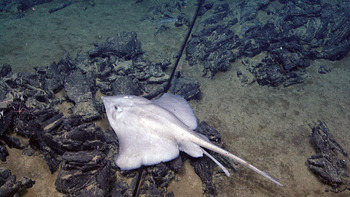We have witnessed vast pillow basalt flows that are often heavily sedimented, fossilized lava lakes, and beautiful, gently swimming animals including numerous “Dumbo” octopuses and skates
Since last night we have been imaging the armored fiber-optic cable that was installed ~3 weeks ago up one of the flanks of Axial Seamount. The ~26 km cable runs from a water depth of ~2650 meters (8694 feet) at the base of Axial Seamount to the summit at 1500m (4921 ft). The cable will provide power and bandwidth to a diverse suite of sensors at Axial to help us monitor the volcano for signs of eruptions and earthquakes and the impacts that these events have on active hydrothermal vents and associated biological communities. Although telecommunication cables are routinely laid over mid-ocean ridge spreading centers such at the Mid-Atlantic Ridge in the Atlantic Ocean and the Juan de Fuca Ridge in the Pacific Ocean, this cable and Neptune Canada’s cable are the first to be specifically designed to provide power and bandwidth to sensors deployed on tectonically and magmatically active submarine volcanoes. The cable was deployed from the cable ship TE SubCom Dependable as part of the National Science Foundation’s Ocean Observatories Initiative.
As we migrated up the slopes of the volcano with the ROV ROPOS, we have witnessed vast pillow basalt flows that are often heavily sedimented, fossilized lava lakes, and beautiful, gently swimming animals including numerous “Dumbo” octopuses and skates. White, multi-legged holothurians that scavenge the basaltic rocks and sediments are very abundant on the volcano's flanks. We have also seen numerous kinds of corals and sponges that come in a variety of colors, alll a testament to the novel ability for life to thrive in the dark ocean depths.






